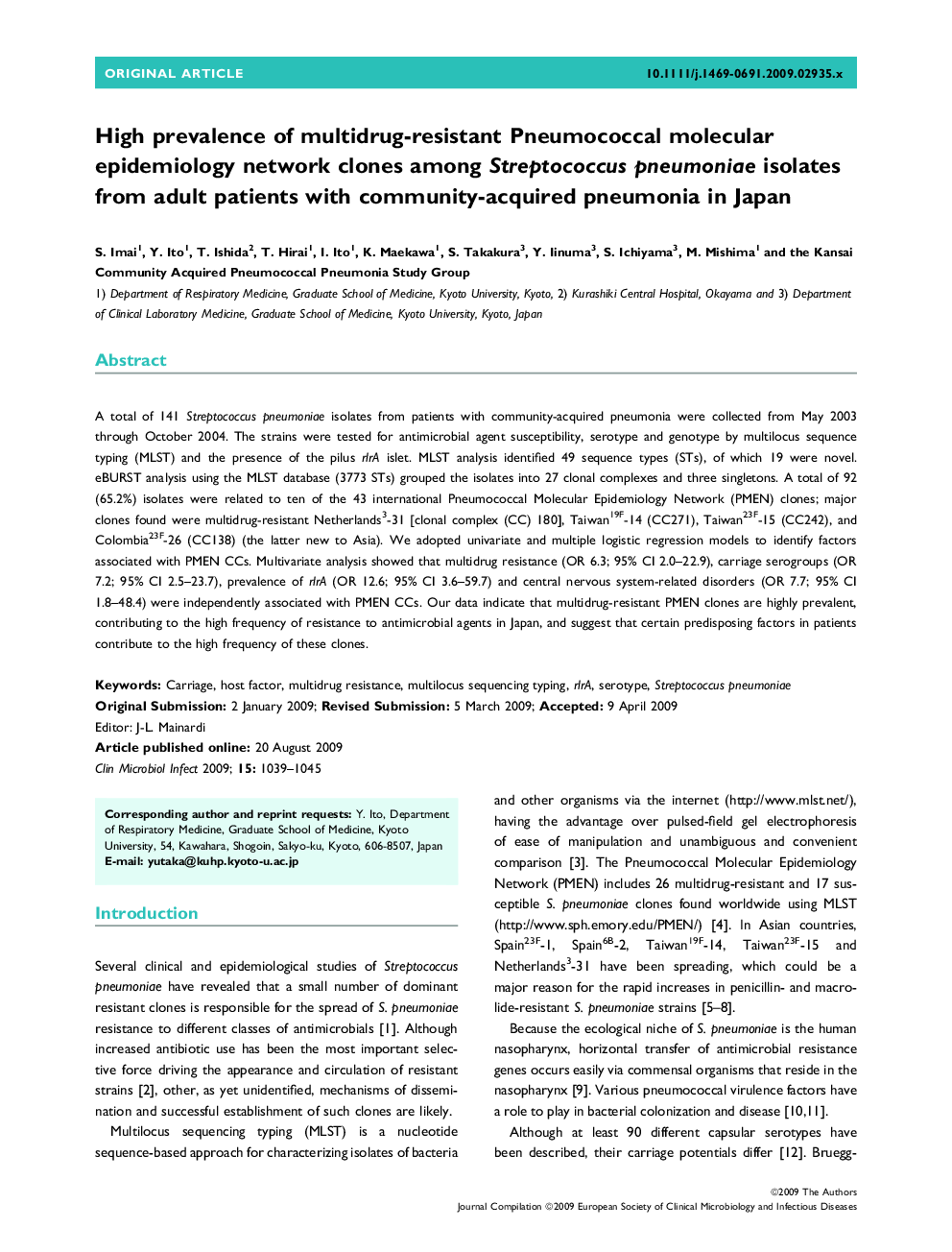| Article ID | Journal | Published Year | Pages | File Type |
|---|---|---|---|---|
| 3397568 | Clinical Microbiology and Infection | 2009 | 7 Pages |
A total of 141 Streptococcus pneumoniae isolates from patients with community-acquired pneumonia were collected from May 2003 through October 2004. The strains were tested for antimicrobial agent susceptibility, serotype and genotype by multilocus sequence typing (MLST) and the presence of the pilus rlrA islet. MLST analysis identified 49 sequence types (STs), of which 19 were novel. eBURST analysis using the MLST database (3773 STs) grouped the isolates into 27 clonal complexes and three singletons. A total of 92 (65.2%) isolates were related to ten of the 43 international Pneumococcal Molecular Epidemiology Network (PMEN) clones; major clones found were multidrug-resistant Netherlands3-31 [clonal complex (CC) 180], Taiwan19F-14 (CC271), Taiwan23F-15 (CC242), and Colombia23F-26 (CC138) (the latter new to Asia). We adopted univariate and multiple logistic regression models to identify factors associated with PMEN CCs. Multivariate analysis showed that multidrug resistance (OR 6.3; 95% CI 2.0–22.9), carriage serogroups (OR 7.2; 95% CI 2.5–23.7), prevalence of rlrA (OR 12.6; 95% CI 3.6–59.7) and central nervous system-related disorders (OR 7.7; 95% CI 1.8–48.4) were independently associated with PMEN CCs. Our data indicate that multidrug-resistant PMEN clones are highly prevalent, contributing to the high frequency of resistance to antimicrobial agents in Japan, and suggest that certain predisposing factors in patients contribute to the high frequency of these clones.
